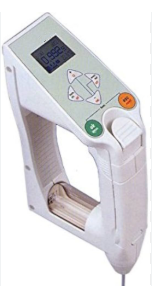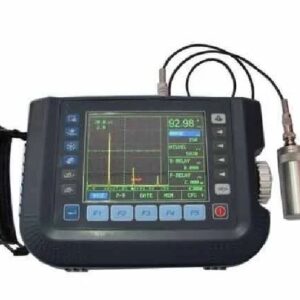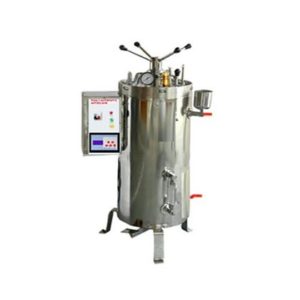UNIVERSAL TESTING MACHINE
MAKE DINESH SCIENTIFIC
DESCRIPTION:
Metals and other materials are tested under tension, compression, bending, transverse, and shear loads using the Universal Testing Machine, which is designed and manufactured. It is also possible to perform hardness tests on metals.
A sophisticated and specialized tool called an ATM Universal Testing Machine (UTM) is used to assess the dependability, security, and efficiency of Automated Teller Machines (ATMs). The use of this cutting-edge testing apparatus is essential to guaranteeing that ATMs adhere to legal and industry standards. Numerous testing tools, such as stress testing, security evaluations, and functionality testing, are available for the ATM UTM. Evaluating the ATM’s fundamental functions, such as cash dispensing, deposit processing, and card handling, is known as functionality testing. Security assessments make sure the ATM complies with the strictest security regulations by thoroughly analyzing its authentication procedures, encryption protocols, and general susceptibility to threats.
FEATURES :
- Varying the speed of the strain to accommodate different materials.
- Graphs from printers and PCs make it possible to examine how materials behave.
- Fast and effortless middle crosshead adjustment is made possible by motor-driven threaded columns, which enable test specimens to be fixed quickly.
- reading made easier with digital readouts.
- Many unique and standard accessories, such as load stabilisers.
- Simple conversion of plain specimens to threaded and screwed specimens.
- Both standard specimens and structures can be tested thanks to the large effective clearance between the columns.
- Easy to operate controls that are simple.
- Sturdy ,incredibly rigid frame designed for straining.
- Safety devices guarantee a safe operating environment.
- Completely sealed and safeguarded pressure transducer.
- Data can be transferred to a computer via an RS-232 serial port for analysis, storage evaluation.
- Operation of the release valve and manual control.
- Corrosion resistance
- Sturdy construction
- noise free
- Longer service life
- Durable performance
PRINCIPLE OF OPERATION:
The machine operates by hydraulically transmitting the load from the test specimen to a load indicator that is housed separately. The hydraulic system is perfect because it transfers load without the need for levers or knife-edges, which can break or wear out easily from shock when test pieces burst. A ram that has been hydrostatically lubricated applies load. The pendulum dynamometer system’s cylinder, located in the control panel, receives pressure from the main cylinder. The dynamometer’s cylinder is also self-lubricating in design. Through a lever system, the load applied to the dynamometer’s cylinder is transferred to a pendulum. The load indicator pointer and the autographic recorder are operated by the rack and pinion mechanism, which is activated by the pendulum’s displacement.
STRAINING UNIT:
This is made up of a sturdy base supporting a hydraulic cylinder, a motor with a chain and sprocket drive, and a table attached to the hydraulic cylinder’s ram. To remove friction, the ram and the cylinder are lapped separately. Two straight columns firmly secure the upper cross-head to the table. Two motor-driven screwed columns are attached to the lower cross-head. By eliminating any potential side loading from the cylinder and ram through the use of ball seatings, axial loading of the ram is guaranteed. To quantify the specimen’s deformation, an elongation scale with a minimum graduation of 1 mm is offered. To perform a tension test, place your hands between your upper and lower
CONTROL PANEL:
- The control panel is made up of an autographic recorder, control valves, a load indicator system, a pendulum dynamometer, a power pack with a drive motor and an oil tank.
POWER PACK:
- The power pack can produce 3.0 HP of pressure. Non-pulsating oil flow is continuously provided by the hydraulic pump. The load application is therefore extremely smooth.
HYDRAULIC CONTROLS:
- To regulate the flow to and from the hydraulic cylinder, hand-operated wheels are utilized. There are endless options for controlling the flow of oil. A regulating valve that is part of the hydraulic system keeps the piston moving at a nearly constant pace.
TECHNICAL DETAILS:
| Model | DS-902 |
| Load | 5 to 10 kN |
| Load Accuracy | ±1 |
| Load Range | 2% ~ 100% of nominal load of load cell used |
| Load Resolution | 1/20,000 |
| Speed Accuracy | ±1% of set speed |
| Distance Between Columns | 400 mm |
| Testing Space | 800 mm for tensile & compression |
| Cross Head Displacement | 0.001 mm |
| Cross Head Test Speed | 0.050 – 500 mm/min |
| Construction | Floor mounted |
| Accessories | Includes standard accessories for the machine |
| Method of Loading | Double re-circulating ball screw |
| Cross Head Stroke | 1140 mm (without load cell & grips; can be customized) |
















Reviews
There are no reviews yet.